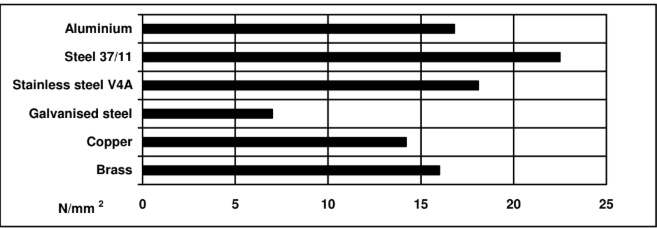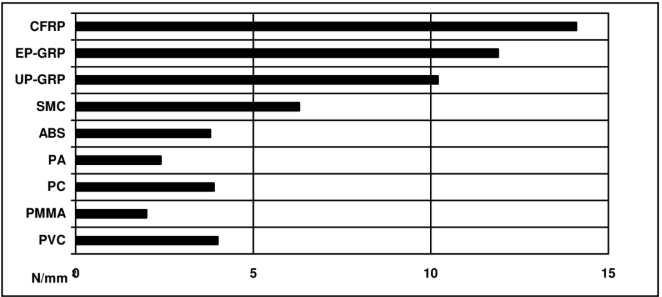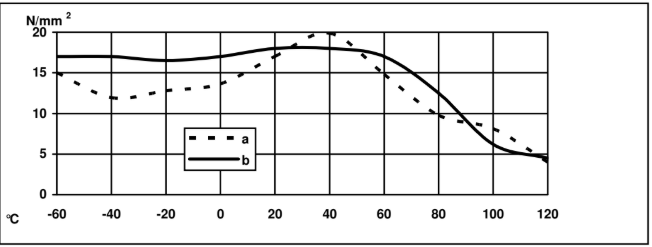Enhanced TDS
Identification & Functionality
- Chemical Family
- RTU Product Type
- Technologies
- Product Families
Features & Benefits
- Ready-to-Use Product Features
- Product Properties
- Excellent chemical resistance
- Temperature resistant to 100°C
- Bonds well to metals and treated surfaces
- Gap filling paste with controlled flow to allow good wetting without excessive capillary action.
- Easy 2:1 mixing ratio by volume
Applications & Uses
- Application Area
- Compatible Substrates & Surfaces
- Markets
- Applications
- Applications
- The resin/hardener mix is applied with a spatula, to the pretreated and dry joint surfaces.
- A layer of adhesive 0.05 to 0.10 mm thick will normally impart the greatest lap shear strength to the joint.
- The joint components should be assembled and clamped as soon as the adhesive has been applied.
- An even contact pressure throughout the joint area will ensure optimum cure.
Properties
- Physical Form
Technical Details & Test Data
- Cured Properties
Typical Cured Properties
- Unless otherwise stated, the figures given below were all determined by testing standard specimens made by lap-jointing 114 x 25 x 1.6 mm strips of aluminium alloy. The joint area was 12.5 x 25 mm in each case.
- The figures were determined with typical production batches using standard testing methods. They are provided solely as technical information and do not constitute a product specification.
Average lap shear strengths of typical metal-to-metal joints (ISO 4587) (typical average values)
- Cured for 16 hours at 40°C and tested at 23°C.
- Pretreatment - Sand blasting and degreasing

Average lap shear strengths of typical plastic-to-plastic joints (ISO 4587) (typical average values)
- Cured for 16 hours at 40°C and tested at 23°C
- Pretreatment - Lightly abrade and alcohol degrease.

Lap shear strength versus temperature (ISO 4587) (typical average values)
- Cure: (a) = 16 hours/40°C (b) - Cure 24hours/23°C + 1 hour/80°C

Property Value Unit Test Method at Condition Roller peel test (on sandblasted aluminium) 3 N/mm ISO 4578 Cure: 16 hours at 40°C
Shore Hardness (D scale) 84 D ISO 868/03 Cure: 16 hours at 40°C, tested at 23°C, 50% RH
Resistance to Thermal Cycling (100 cycles, -30°C to +70°C on sandblasted aluminium) 14 MPa - Residual strength at 23°C
Tensile Strength 30 MPa ISO 527 Cure: 16 hours at 40°C, tested at 23°C
E-modulus 5.5 GPa ISO 527 Cure: 16 hours at 40°C, tested at 23°C
Elongation at break 0.7 % ISO 527 Cure: 16 hours at 40°C, tested at 23°C
Lap shear strength versus heat ageing (ISO 4587) (typical average values)
- Cure: 16 hours/40°C Test: at 23°C, 50% rh

Lap shear strength versus tropical weathering (ISO 4587) (typical average values)
- (40°C/ 92% RH), on aluminium, cured for 16 hours at 40°C and tested at 23°C.
- Pretreatment - Sand blasting

- Processing Information
Pretreatment
- The strength and durability of a bonded joint are dependent on proper treatment of the surfaces to be bonded.
- At the very least, joint surfaces should be cleaned with a good degreasing agent such as acetone or other proprie- tary degreasing agents in order to remove all traces of oil, grease and dirt. Low-grade alcohol, gasoline (petrol) or paint thinners should never be used.
- The strongest and most durable joints are obtained by either mechanically abrading or chemically etching (“pickling”) the degreased surfaces.
- Abrading should be followed by a second degreasing treatment
Mix Ratio Parts by Weight Parts by Volume
Araldite® AW 4752
100 100 Hardener HW 4753 47 50 Resin and hardener should be blended until they form a homogeneous mix.
Mechanical processing
- Specialist firms have developed metering, mixing and spreading equipment that enables the bulk processing of adhesive.
Equipment maintenance
- All tools should be cleaned with hot water and soap before adhesives residues have had time to cure.
- The removal of cured residues is a difficult and time-consuming operation.
- If solvents such as acetone are used for cleaning, operatives should take the appropriate precautions and, in addition, avoid skin and eye contact.
Typical imes to minimum shear strength
Temperature (°C) 23 Cure Time to Reach >1 N/mm² (hours) 7 LSS > 1 N/mm² (minutes) - Cure Time to Reach >10 N/mm² (hours) 13 LSS > 10 N/mm² (minutes) - LSS = Lap shear strength.
Full curing (maximum Tg) requires the adhesive to be exposed to a temperature of at least 60°C.
The following times are typical options:
- 23°C – 24 hours minimum (not fully cured).
- 60°C – 2 hours. 80°C – 1 hour. 100°C – 20 minutes.
- Co-curing with phenolic impregnated filter media at 150 – 180°C is possible, but duration will depend on the requirement of the filter media (for example 20 minutes at 180°C).
Storage & Handling
- Storage and Handling Precautions
Storage
-
Araldite® AW 4752 and Hardener HW 4753 must be stored at room temperature provided the components are stored in sealed containers.
Handling Precautions
- Our products are generally quite harmless to handle provided that certain precautions normally taken when handling chemicals are observed.
- The uncured materials must not, for instance, be allowed to come into contact with food- stuffs or food utensils, and measures should be taken to prevent the uncured materials from coming in contact with the skin, since people with particularly sensitive skin may be affected.
- The wearing of impervious rubber or plastic gloves will normally be necessary; likewise the use of eye protection.
- The skin should be thoroughly cleansed at the end of each working period by washing with soap and warm water.
- The use of solvents is to be avoided. Disposable paper - not cloth towels - should be used to dry the skin.
- Adequate ventilation of the working area is recommended.
-
Other
- Physical Properties
Value Units Test Method / Conditions Lap Shear Strength min. 10.0 MPa MPa Internal Method at 80°C Specific Gravity approx. 1.7 - Viscosity approx. 30.0 Pa.s Pa.s
